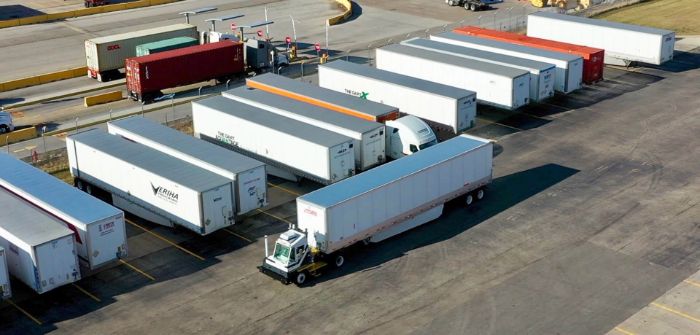Outrider has raised US$53m in funding and carried out pilots of its Outrider System, which focuses on automating yard operations for logistics hubs.
The seed and series A funding rounds were led by led by NEA and 8VC respectively, with investors including Loup Ventures and GOOSE Society of Texas.
Distribution yards are designed to keep semi-trailers full of freight moving in the space between the warehouse doors and public roads, but processes make them manual, inefficient and hazardous.
Outrider automates the repetitive aspects including moving trailers around the yard, moving them to and from the loading docks, hitching and unhitching trailers, connecting and disconnecting trailer brake lines, and monitoring trailer locations.
Andrew Smith, founder and CEO of Outrider, said, “Logistics yards offer a confined, private-property environment and a set of discrete, repetitive tasks that make the ideal use-case for autonomous technology. But today’s yards are also complex, often chaotic settings, with lots of work that’s performed manually. This is why an overarching systems approach – with an autonomous truck at its center – is key to automating every major operation in the yard.”
The Golden, Colorado-based company is demonstrating its product through pilot programs with Georgia-Pacific and four Fortune 200 companies.
Annant Patel, vice president of automation transformation at Georgia-Pacific, said, “We’re constantly looking for ways to transform our company and the way we get work done, especially making work safer and more efficient and productive. Yard operations has been one of our opportunities, and Outrider has been a great partner to help us automate our pilot site.”
Outrider has developed a three-part system including management software, autonomous zero-emission yard trucks featuring vision-based robotics, and site infrastructure.
Smith said distribution yards of the future will not only be autonomous, but also electric: “Electric yard trucks are easier to operate and maintain than their diesel counterparts, and they lend themselves to better computer control. Our mission is to work with customers and suppliers to rapidly retire the more than 50,000 diesel-polluting yard trucks currently operating at logistics hubs throughout the USA.”


